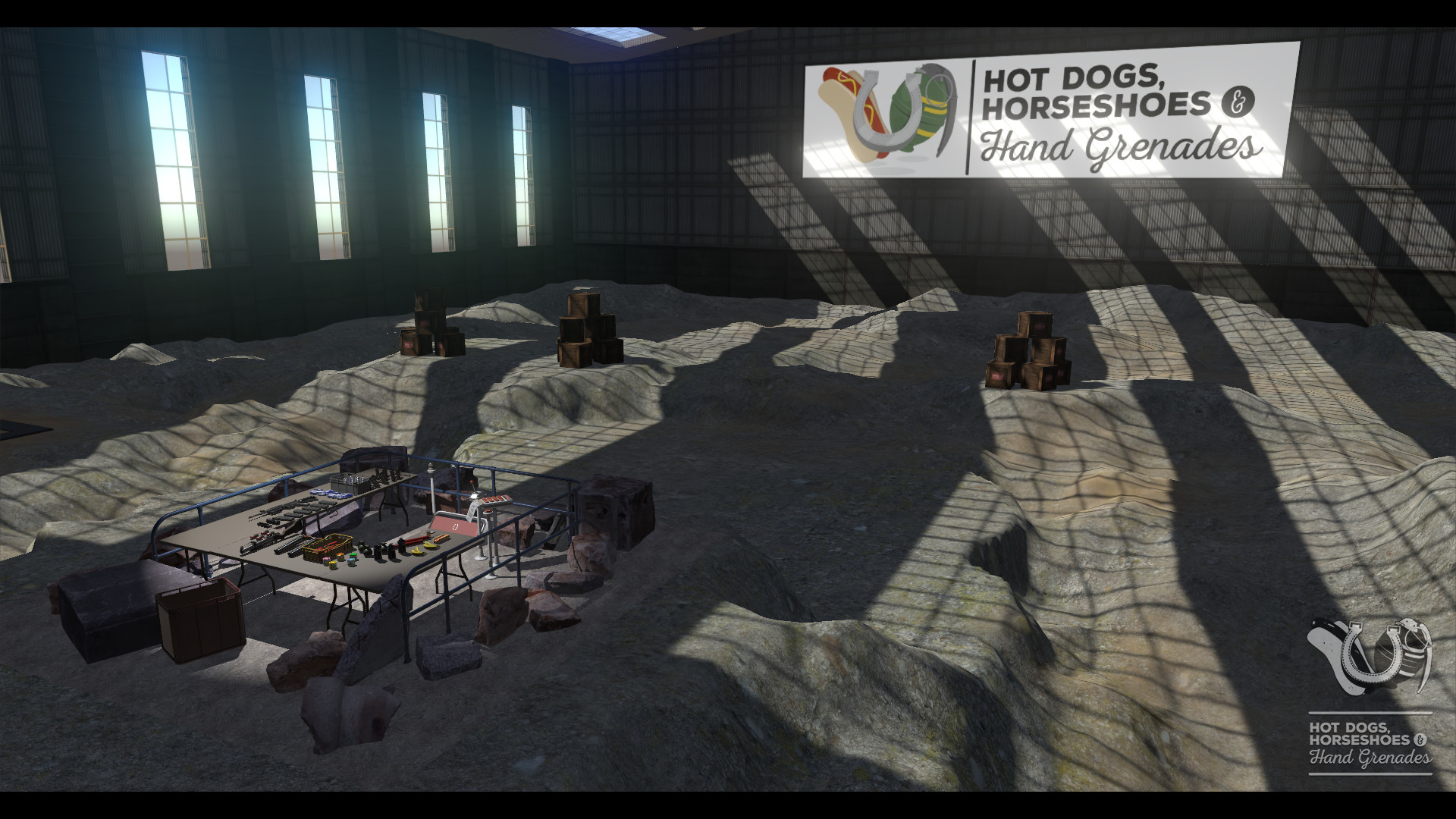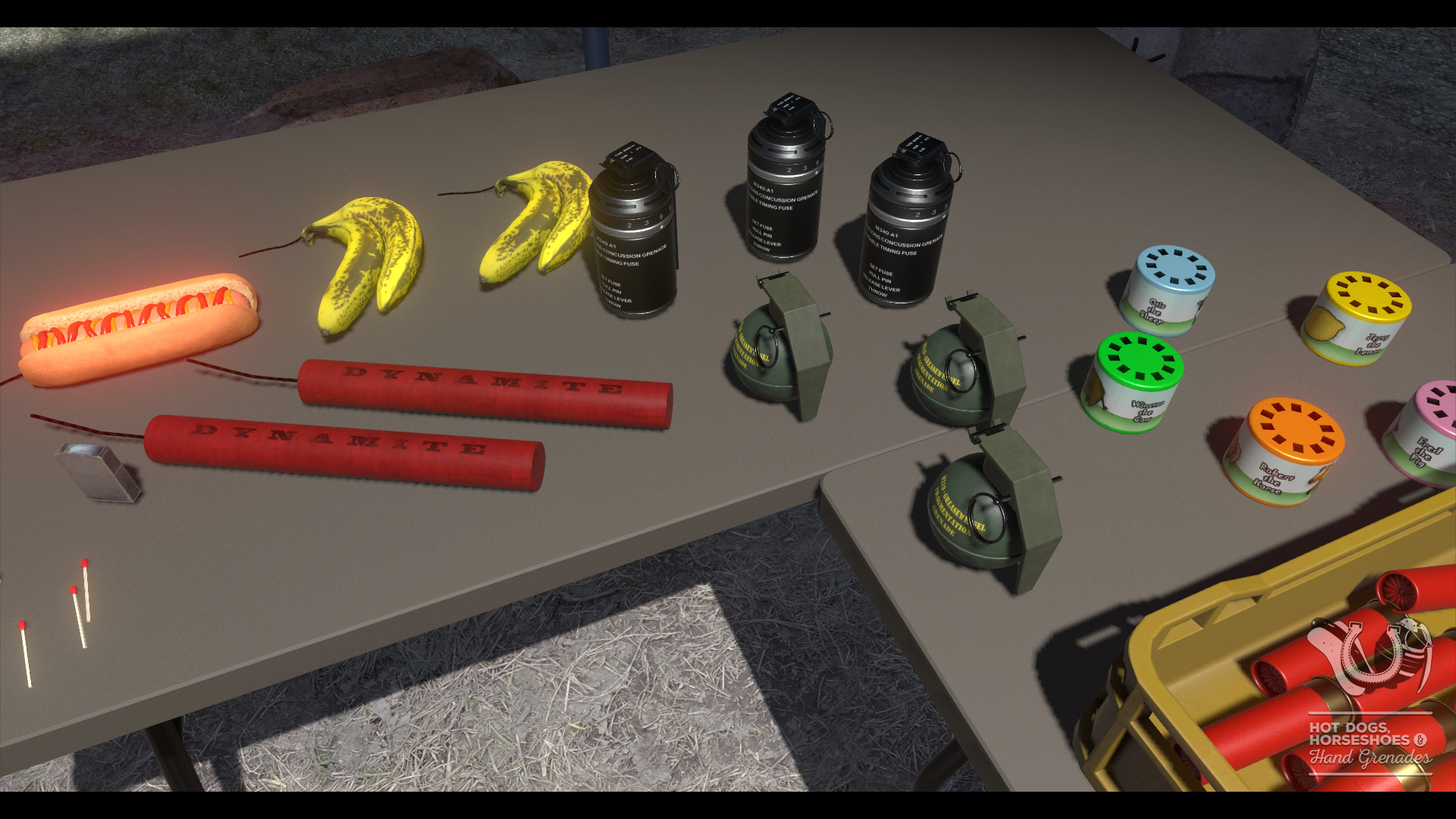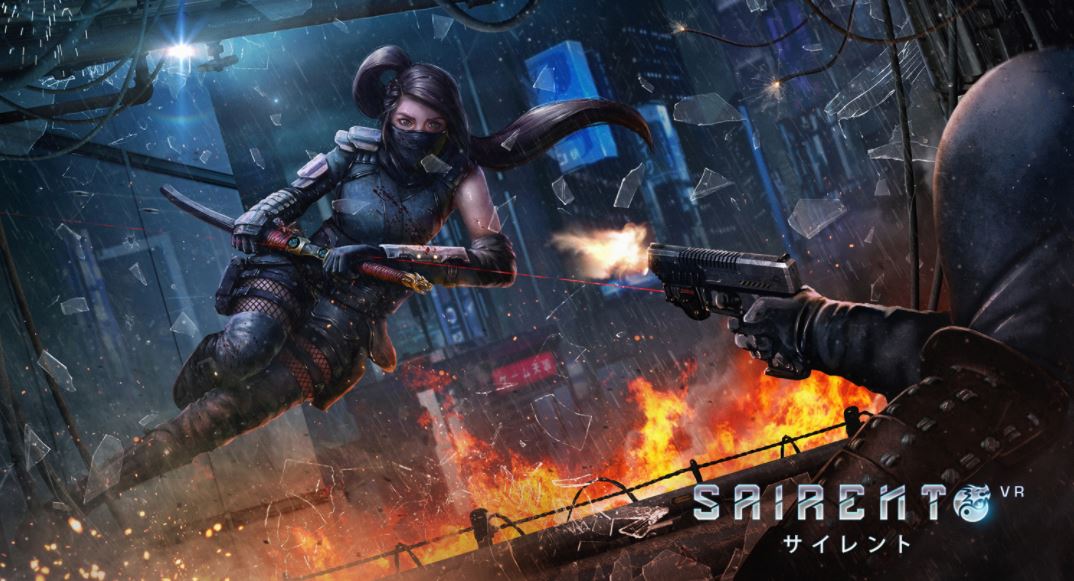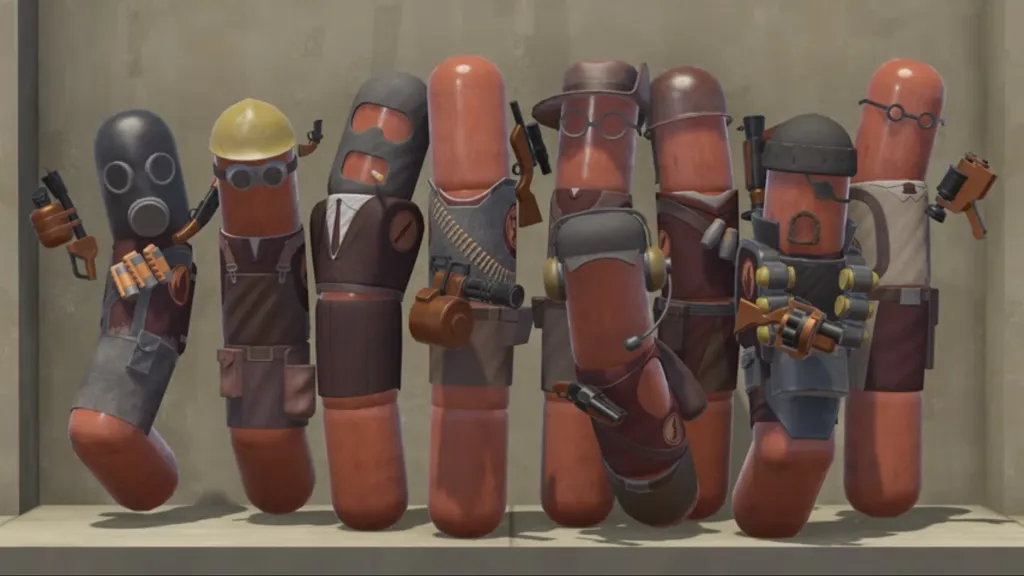Hot Dogs, Horseshoes & Hand Grenades – often referred to colloquially as H3VR – stands out in the saturated sea of VR shooters for a few reasons. For one, it features anthropomorphized sausages as its enemies, making this a relatively child-friendly shooter. Rather than be about respawn rates and fragging enemies, it’s billed more as a gun shooting simulator with hyper-realistic and intricate interactions. It’s also never on sale, owing to RUST LTD’s faith in their product and it’s value – for good reason, too. H3VR has over 70 updates, notably including this week’s Meat Fortress event, all of which have been released free of charge since the game entered Early Access in 2016. It’s this that really makes H3VR stand out from the pack, the exhaustive dedication to iterative improvement.
Anton Hand, CTO of RUST LTD, was kind enough to lend me his time to help explain this phenomenon. H3VR’s Early Access state came about essentially due to Hand’s virality and the HTC Vive’s initial launch. Upon uploading some test footage in early 2016 of him goofing around with gun models in VR, viewers started asking for him to release something to coincide with the Vive’s launch that they, too, could play with. His plan was initially to rush out the “beginning structure of an early access game,” Hand explained, adding that they’d be incredibly open about their intention to update it frequently.
“Something that’s very philosophically ‘us’ is the opposite of the ‘hard sell'”, Hand added, alluding to the fact that they never wanted to pressure people into buying their game only to end up feeling disappointed. They’d much rather their community adopts the approach of “Follow along, we’re doing weekly videos and putting out weekly updates, buy in when/if it looks interesting enough for you to pay for.”
Though they initially planned to leave Early Access some time in 2018, H3VR still hasn’t seen a 1.0 release, because, “The experiments are ongoing and this is a project that [is] reactive to its community, ” as Hand put it. A key example of this is the Take and Hold mode, which “stemmed from [me] wanting to do a lighting test with a modular hallway kit”, and after fans flocked to the mode and expressed their approval, ended up getting “several iterations of improvement,” from the team.
Update #52 was so large that it took them around 3 months to complete and “was the most extensive refactor of the game’s systems that it ever got… especially given the complexity of it, [it was a] more extensive rebuild than a game tends to get,” Hand remarked, adding that “I think a lot of people probably would have just released a brand new game at that point,” but they were determined to see out their vision of H3VR.
I commented that some of these updates were easily expansive enough to qualify as DLC, but questioned why they’d kept everything free. His response was cheerful but he clearly has a strict code of conduct: “I’ve joked for a while that we’re a live service game that you only pay for once… I’m very much not [a fan of the] monetization strategies of our industry, I find them sort of predatory.”

“There are two reasons why these various updates aren’t structured like DLCs that you pay for,” Hand said. The first of which is technical, mentioning that they were strictly aiming for regular updates, so anything that would slow that infrastructure down is an immediate red flag. “The second one is just a general, philosophical/emotional [reason, that] there are people who’ve been following this game for several years who save up their pennies and buy into VR – especially young kids,” and the last thing Hand wants is “little Timmy to buy the game because he got a VR system for Christmas as his one gift,” only to discover that “he doesn’t have 80% of the guns because he doesn’t have the money to buy them for $2.99 each.”
“If you’re a creator and you’re trying to make something that’s a positive part of someone’s day and existence, that just isn’t something you do to other people who you care about,” Hand explained. “If I had to do that to survive making media products, I wouldn’t make media products, I would go be a carpenter or something – I just don’t believe in doing that to people.”
He embellished this with the story of a holiday event that he ran over one December. “I got through my head to do [this] advent calendar where I did an update a day from December 1st to December 25th.” These updates included a hidden advent box that would unlock new guns, grenades, and more for players to enjoy, and despite describing it as a gruelling experience that he’d grossly underestimated the workload for, the response was overwhelming. “I was originally like ‘no, there’s no way I’m ever going to do that [again]’,” but he received some heartwarming messages from the community: “[They told me] how important it was to them, one guy [wrote] ‘you’re the only one that got me anything for Christmas this year.'”

Another recently separated fan felt that the event gave him a reason to keep living “and so I always try to do something special [for] the holidays, and I think even after we hit [version 1.0] for H3VR… I will absolutely keep doing the holiday stuff… because that kind of stuff is so special to some people,” Hand remarked.
If Hand’s passion for his craft was ever in question, you’d need look no further than his YouTube channel. He uploads fairly regular devlog videos and his most recent upload is an excellent example. While discussing the Team Fortress 2 weapons that they’ve implemented into H3VR for the Meat Fortress update, we get a good insight into his perspective. Not only is he incredibly respectful of the source material he’s working with, going to great lengths to maintain as much authenticity as he can while also adapting the guns to realistic physics, but you can hear genuine glee in his voice when he’s testing out the weapons.
He left me with an eye-opening take on the current state of the gaming industry and why live service models are effective: “You’re not actually fighting for anyone’s money, anymore. Actually, you’re fighting for minutes of their time; that’s the commodity now. You are trying to deliver something that’s worth their time, not trying to pick money out of their wallet, because we’ve reached saturation in this industry.”
Another game that surprised me with the depth of free updates is the chaotic Sairento VR, which received a new Oculus Quest spinoff this week. Despite launching in Early Access in 2016 and later releasing in 2018, they still weren’t done iterating on Sairento VR. I posed my questions to Aldric Chang, CEO of Mixed Realms, about their title. “Sairento VR was born of a desire [to] mesh the iconic ‘bullet-time’ scenes from The Matrix, the slow-motion mayhem of Max Payne… while looking and feeling as badass as the Bride from Kill Bill,” Chang explained. “Our mistake was coming out of EA a tad early, but that [didn’t stop] us from continuing to roll out updates.”
They were striving for perfection with their updates, Chang told me, clarifying that “Of course there is no true perfection as a game can always be improved, but we think that we owe it to our fans to at least bring the game to a state where they can play it the way we intended for them to.” This desire to serve their fans was important to them, stating that, “As a game developer, we are clear that we answer chiefly to our fans. We owe any sales and success to them…they deserve the best that we can give them. And if something can be improved, we want to do it.”
Unlike H3VR, however, this approach was never really part of the plan for SairentoVR. Chang and the team “simply felt that we owed it to our fans to make the game as good as we could make it. It was clear at least to us that Sairento still needed improvement in some areas, so we decided to work on them.” He also elaborated on how the fans can – and often should – be a part of this process: “The ‘jump’ mechanic that defines Sairento now… The player feedback was tremendously in favor of making this the default option.”
As with Hand, I asked why these updates remained free of charge, and Chang reiterated a similar sense of morality. “Of course we could have waited to compile all the updates and sold them as a DLC but that would mean delaying the updates. That wouldn’t be right…we had many bugs in the earlier iterations of our game…we wanted to give away the later updates to reward our fans for being patient with us.”

It was humbling to hear this sentiment of loyalty to the fans echoed throughout our interview. “Players don’t want to be told what they can’t experience – only to be shown what they can,” Chang concluded.
Both H3VR and Sairento VR are notable titles that wouldn’t be what they are today without the tireless work of their developers. These are shining examples of how continual iteration can be the ethical future of gaming, and we can only hope other developers follow suit.


























